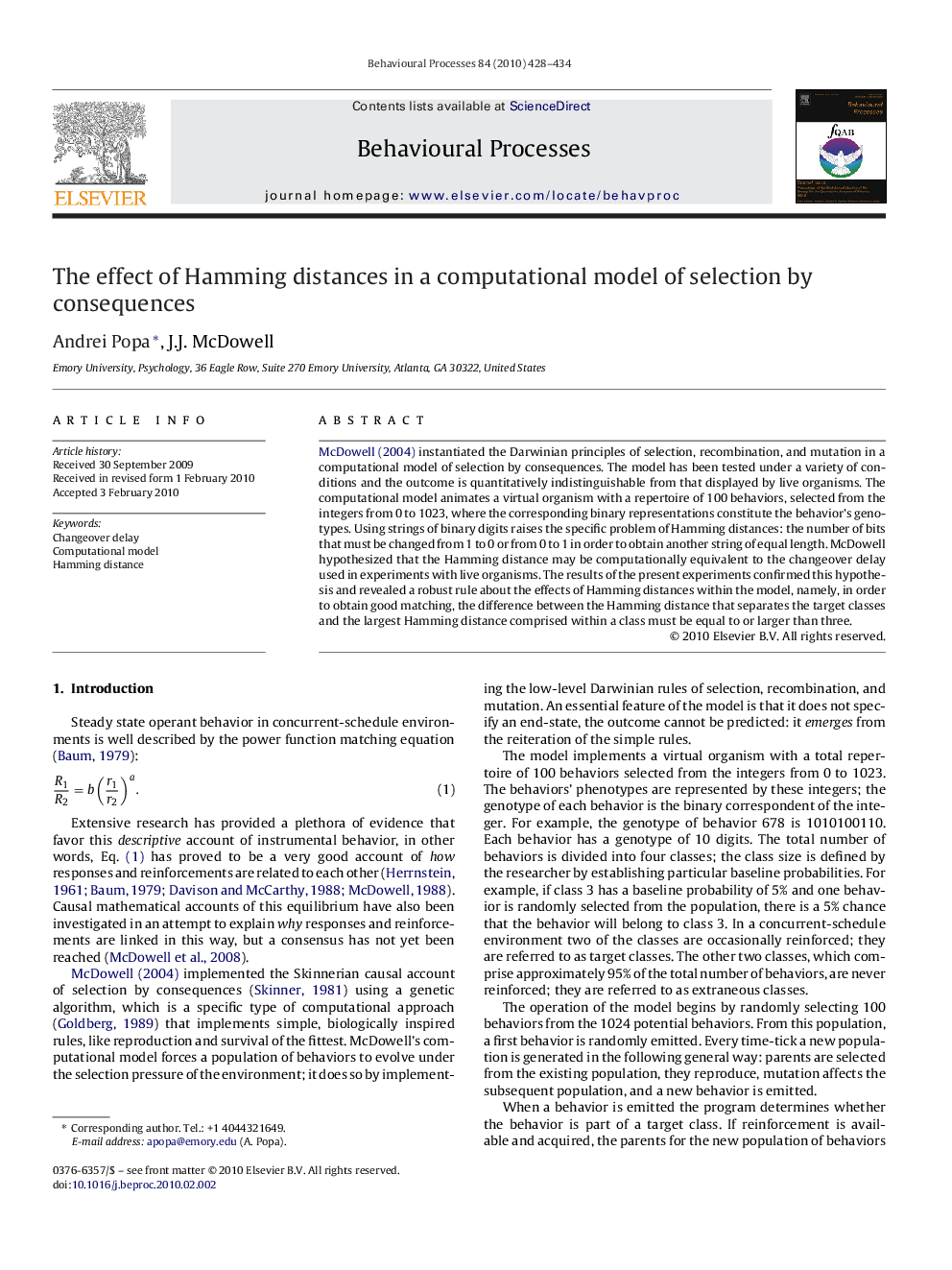| کد مقاله | کد نشریه | سال انتشار | مقاله انگلیسی | نسخه تمام متن |
|---|---|---|---|---|
| 2427130 | 1105946 | 2010 | 7 صفحه PDF | دانلود رایگان |

McDowell (2004) instantiated the Darwinian principles of selection, recombination, and mutation in a computational model of selection by consequences. The model has been tested under a variety of conditions and the outcome is quantitatively indistinguishable from that displayed by live organisms. The computational model animates a virtual organism with a repertoire of 100 behaviors, selected from the integers from 0 to 1023, where the corresponding binary representations constitute the behavior's genotypes. Using strings of binary digits raises the specific problem of Hamming distances: the number of bits that must be changed from 1 to 0 or from 0 to 1 in order to obtain another string of equal length. McDowell hypothesized that the Hamming distance may be computationally equivalent to the changeover delay used in experiments with live organisms. The results of the present experiments confirmed this hypothesis and revealed a robust rule about the effects of Hamming distances within the model, namely, in order to obtain good matching, the difference between the Hamming distance that separates the target classes and the largest Hamming distance comprised within a class must be equal to or larger than three.
Journal: Behavioural Processes - Volume 84, Issue 1, May 2010, Pages 428–434